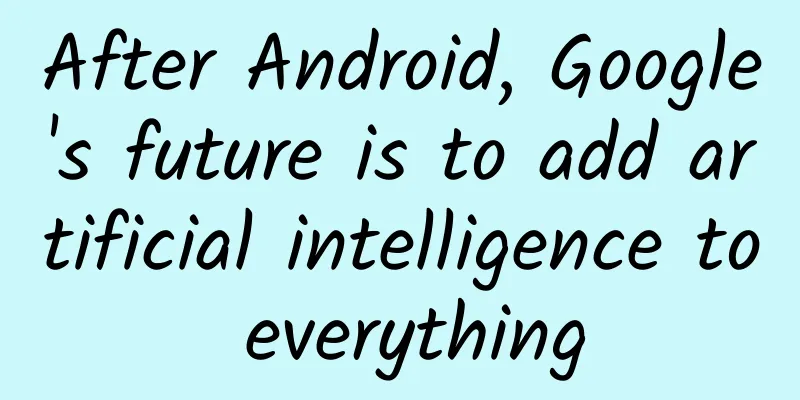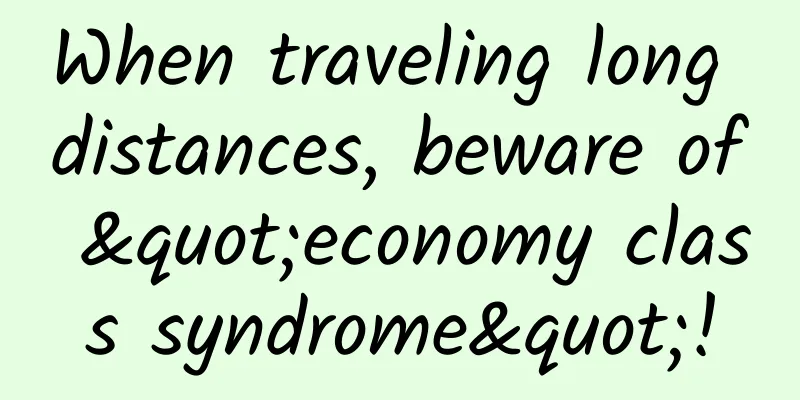After Android, Google's future is to add artificial intelligence to everything

|
Google's annual developer conference is now in its ninth year and is larger than ever before, having moved from the previous indoor convention center to the Shoreline Amitheater, which can accommodate more than 20,000 people. There are also 10 outdoor booths and product experience areas set up around the venue, and the event will be held for 3 consecutive days. This year's Google I/O moved the main venue outdoors. Image from Visual China. But in such a grand event, Android is no longer the protagonist. The opening speech lasted two hours, and the new system Android N only took 17 minutes, which was not as long as the new chat application Allo. Two months before the conference, the beta version of Android N was released, and Google did not leave any suspense about it at the conference. The conference did not even mention the latest number of Android users. So what future does Google describe this year? What is Google betting on this year? Sundar Pichai. Image from Visual China. The words that Google CEO Sundar Pichai repeated most at the event were natural language processing (NLP, allowing computers to understand what you say), artificial intelligence, and machine learning (artificial intelligence training method). Unlike in the past, the first product released by Google was not a new Android operating system, but a virtual assistant, The Google Assistant, which can be used on mobile phones, TVs, watches and even home devices. Sound like Siri? Yes, but better. In Pichai's live demonstration, Google Assistant's recognition of natural language is very good. For example, these sentences can return good results:
Google Home smart speaker Next up is the Google Home speaker, a voice-controlled smart speaker that will be available in the second half of this year. Google Home. Image from Visual China. The functions of Google Home are exactly the same as those of Amazon's Echo smart speaker, which was launched earlier and is currently very popular in Silicon Valley. Key features include:
Amazon Echo. Image via CNET. Google Home's main advantage over Amazon Echo or Siri may be better voice control and search capabilities. However, access to third-party services is currently communicated directly by Google and is not open to developers. At the meeting, Google executives said that Google Home will be the entrance to Google's future smart home. This new product comes from the Chromecast team, and the smart home platform built around Nest was not mentioned at all. Virtual Reality Development Platform - This Fall Two years ago, the I/O conference released the paper VR (virtual reality) glasses Cardboard. Now the Cardboard application has been downloaded 50 million times. Google believes that the future of VR must be linked to mobile phones, rather than a device connected to a high-performance PC. What Google has done this time is to create a platform for mobile VR, which is still a few years away from the market, called Daydream. The entire DayDream platform is divided into three parts:
In addition, Google has also developed its own VR applications. Street View, Google Movies, Google Photos, and YouTube will all have VR versions. Allo - This summer Google is making another chat app, and this time its selling point is artificial intelligence. In addition to allowing you to more conveniently post emoticons and zoom in and out of emoticons to help express yourself, the biggest highlight of Allo is "Smart Reply", which will learn your language habits and automatically write your answer, which can be text or emoticons, and can be sent with just a tap of your finger. Relying on Google's artificial intelligence, Allo can recognize the photos sent by the other party. In the demonstration, the other party sent a photo of a dog. Allo automatically pops up three reply options: "What a cute dog!", "Aww!", "What a beautiful Bernese Mountain dog". There are more convenient ways to get rid of people, not just "Haha", "I'm going to take a shower", "..." What’s more interesting is that Google has also put functions such as restaurant booking and location display directly into the Allo dialog box, and restaurant selection can also be selected and booked directly in the conversation. In the conversation between you and your friends, you can also call the Google Assistant at any time. The direct competitors of this app are Facebook's WhatsApp and FB Messenger, which have more than one billion users worldwide. Video chat app Duo - this summer Just one instant messaging app isn't enough, Google today also released Duo, a video chat app for iPhone and Android. The main feature is that before you answer the call, the real-time image of the other party will be displayed on your phone. In the words of the presenter, communication starts in advance. Duo comes from the team behind the web communications protocol WebRTC. Android N This is the tenth year that Google has been working on the Android operating system. Since Android N had already released a developer preview version in March this year, it only took about 15 minutes today to repeat the new features of this time:
Smartphones are already very mature, and Android and iOS have been copying each other's functions for two or three years. Most of the new features brought by Android N this time are also made by iOS. Google I/O: From Developer Conference to Android Conference to Future Conference Looking back at the first conference in 2008, Google executives spent most of their opening speech talking about web application development tools. Until 2010, the conversation context at Google I/O was based on the developer perspective, and the purpose of the event was to encourage them to develop more applications. But since 2011, this event has gradually become a stage for Google to draw up a blueprint for the future. In addition to developer tools, Android, network services and hardware products, which have more to do with consumers, have taken up more and more time.
Why is Google in such a rush to find a new future? Since its first developer conference in 2008, Google's market value has nearly quintupled, and it is currently competing with Apple for the top spot in global market value. Eight years ago, the first Android phone was launched, and the market response was mediocre. Today, including Chinese-made Android phones stripped of Google services, the number of Android users is approaching 2 billion. Through search engines and Android, Google affects the lives of billions of people. But it is also a thorough advertising company, with 90% of its revenue coming from advertising marketing. This is similar to the impact of the iPhone on Apple, where a single source of revenue supports the entire company, and as global Internet users outside of China are using Google services and smartphones, there is little room for user growth. On the other hand, unlike the PC era, smartphone users first open each specific application instead of searching. Social products, in particular, are occupying more and more time of users. Globally, Facebook and its WhatsApp and Instagram take up most of the time. In China, WeChat plays this role. In short, search engines are becoming less and less important. This is reflected in the changes in mobile advertising revenue. The growth rate of Facebook and WeChat advertising is much higher than that of Google and Baidu. Just a few days before the conference, Facebook announced that it would provide video advertising for multiple major media, directly stealing Google's job. Relying on the Android store and the previously untapped mobile advertising market, Google's revenue growth will continue for some time, but there is no doubt that it will reach a ceiling if it cannot find new sources of revenue. Therefore, we have seen Google continuously launch new products in the past few years, from the Google+ social network to new hardware platforms such as Google Glass, all in search of the future. This year, Google showed the future of artificial intelligence in everything, as well as VR. A future where every tech giant is involved in VR. Compared to Oculus' belief in high-performance, high-priced PC VR head-mounted displays, Google believes that mobile VR based on mobile phones is the future, even though the performance of mobile phones is far from enough. VR won't become popular anytime soon, and what Google is doing today is to ensure that when it becomes popular, it won't bypass itself. But more important is artificial intelligence. "Voice assistants, Amazon Echo, communication apps, this is the Other Idea Conference 2016." The Verge writer Casey Newton commented during the conference. This is not wrong. The conversation between the voice assistant and Siri is essentially the same, every promotional point of Google Home is the same as that of Amazon Echo, and Allo with the addition of a chatbot is also like WhatsApp in many ways. But Google Photos, which was released last year, is nothing new - albums for saving photos are not uncommon. However, Google Photos has attracted 200 million users in just one year. Google Photos is successful because it relies on artificial intelligence to provide features that other companies don't have. For example, it can recognize images and automatically categorize photos of buildings, pets, and specific people; it can automatically help you edit a video; it can automatically help you edit photos, crop photos, and add filters... This is true for all new products released by Google today, all of which use artificial intelligence to improve a category of products and try to attract users with a completely different experience. Artificial intelligence, the technology that Google has always talked about as its advantage, has moved out of the laboratory and into more mature, everyday products. Day after day, year after year, trillions of searches provide Google with opportunities for artificial intelligence training that no competitor has. Gmail, Search, and Maps each have more than one billion users worldwide, allowing Google to understand everyone's information and habits - your itinerary, preferences, address, work location, word usage habits... are all organized and used in the latest products. Artificial intelligence cannot guarantee the success of every product. But today, no company is better positioned to advance artificial intelligence and enable it to permeate the products we use every day. |
>>: 2016 Google I/O Developer Conference Collection
Recommend
Douyin operation: Give users 5 reasons to follow you
Tik Tok has been popular for a while now, and has...
Tips for placing video information flow ads!
" Video is the king ", if you use one w...
Top 10 operational promotion cases in the first half of 2020
2020 will surely be a year that goes down in hist...
Tesla's weak version of FSD is coming to China. Let me be frank. If nothing unexpected happens, it will probably fail.
On February 25, 2025, Tesla launched an OTA push ...
Scientists make milk like beer. Will it make milk taste better?
People who pay attention to health know that drin...
12 modes of short video monetization
This article summarizes some short video monetiza...
How to get users to buy through live streaming?
In just two years, Taobao Live has grown from zer...
Sogou advertising efficient delivery case study!
01. Insights into the thermal insulation material...
6 high-quality details of 100,000+ soft article titles
For soft articles, the first impression is the ti...
The sun is smiling strangely, what does this indicate?
Have you ever seen the sun smile? Here is a photo...
Channel promotion: How to choose high-quality and suitable APP promotion channels
In the operation and promotion of APP, learning t...
Short video operation matrix gameplay!
Account matrix has always been the most common op...
Google may disable fast charging technologies such as Qualcomm and MediaTek in future Android versions
According to a report by Android central, a well-...
Lei Zi Doudian no source 3.0 upgrade practical gameplay
Douyin course catalog: Lesson 1: Ideas and core es...
Six close encounters with Jupiter reveal the mystery of the Great Red Spot that has existed for more than 350 years
On a clear night, you can often see a very bright...









